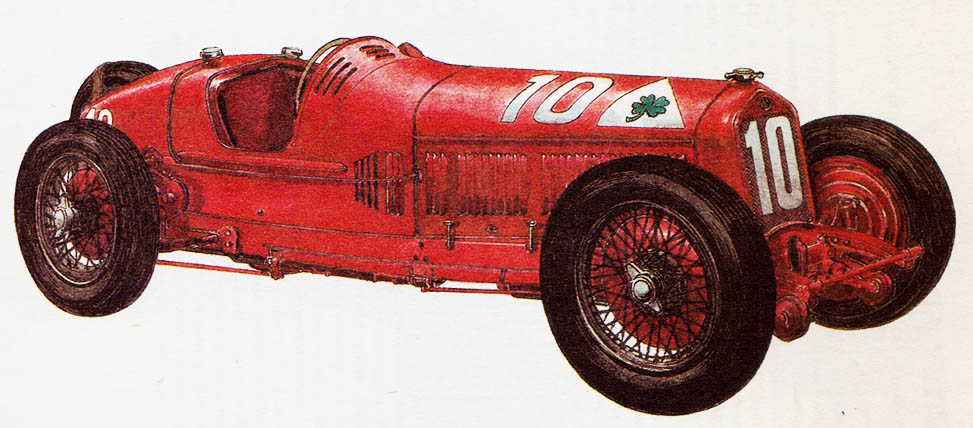ALFA ROMEO P2 – year 1930
SA Alfa Romeo, Milano, Italy.
There are very few successful racing car designs, so that they can maintain a technical advantage for several years. In the case of the Alfa Romeo P2, the winning streak has been dragging on for a year 1924 do 1930. It would be unfair to overlook at least the greatest successes of this car. Only the lack of space makes it impossible to present all the Alfa Romeo P2 victories in the various races, which would take a whole page thickly written. So we'll start with a year 1925, in which P2 won the European Grand Prix at Spa (the first Ascari, average speed 120 km/h, other Campari) and the Italian Grand Prix in Monza (the first Brilli-Peri, average speed 152,5 km/h, other Campari). In year 1928 in the Grand Prix in Monza, Achille Varzi took second place, and in the following year he won. In the last season of the racing participation of the modified P2 model, the car was taken in 1930 r. second place at the track in Monza, headed by Borzachini, and third in the Grand Prix at the track in Brno, Czechoslovakia, led by Nuvolari.

SA Alfa Romeo, Milano, Italy.
Base model described previously (Alfa Romeo 1924) has been in preparation since the season 1930 a bit reworked. The diameter of the cylinders was increased to 61,5 mm, thus, with an unchanged stroke length, a capacity was obtained 2006 cm3. By increasing the mean effective pressure, the engine power increased to 128,7 kW (175 KM) by 5500 RPM. The engine also got a new one, inclined radiator with larger face area, which was no longer covered by the front hood as in the z 1924 year. The chassis has been changed the most, especially both bridges. The widened rigid axles no longer had the same track width at the front and rear. The semi-elliptical leaf springs have been moved beyond the bodywork and connected with a transverse stabilizer. Many chassis components were adapted from the good 6C model 1750. The spare tire was placed in an interesting way, which divided the sharpened section of the aerodynamic body along the rear. As a result, the fuel tank is slightly reduced. The new formula already excluded the participation of another person next to the driver. So there was a second seat left in the cars, already moved to the driver's level, because the passenger did not interfere with driving.